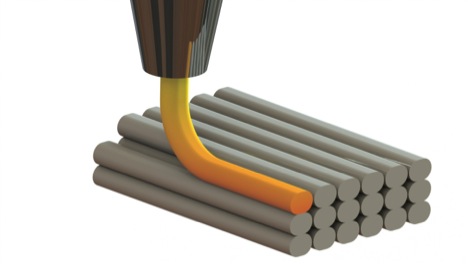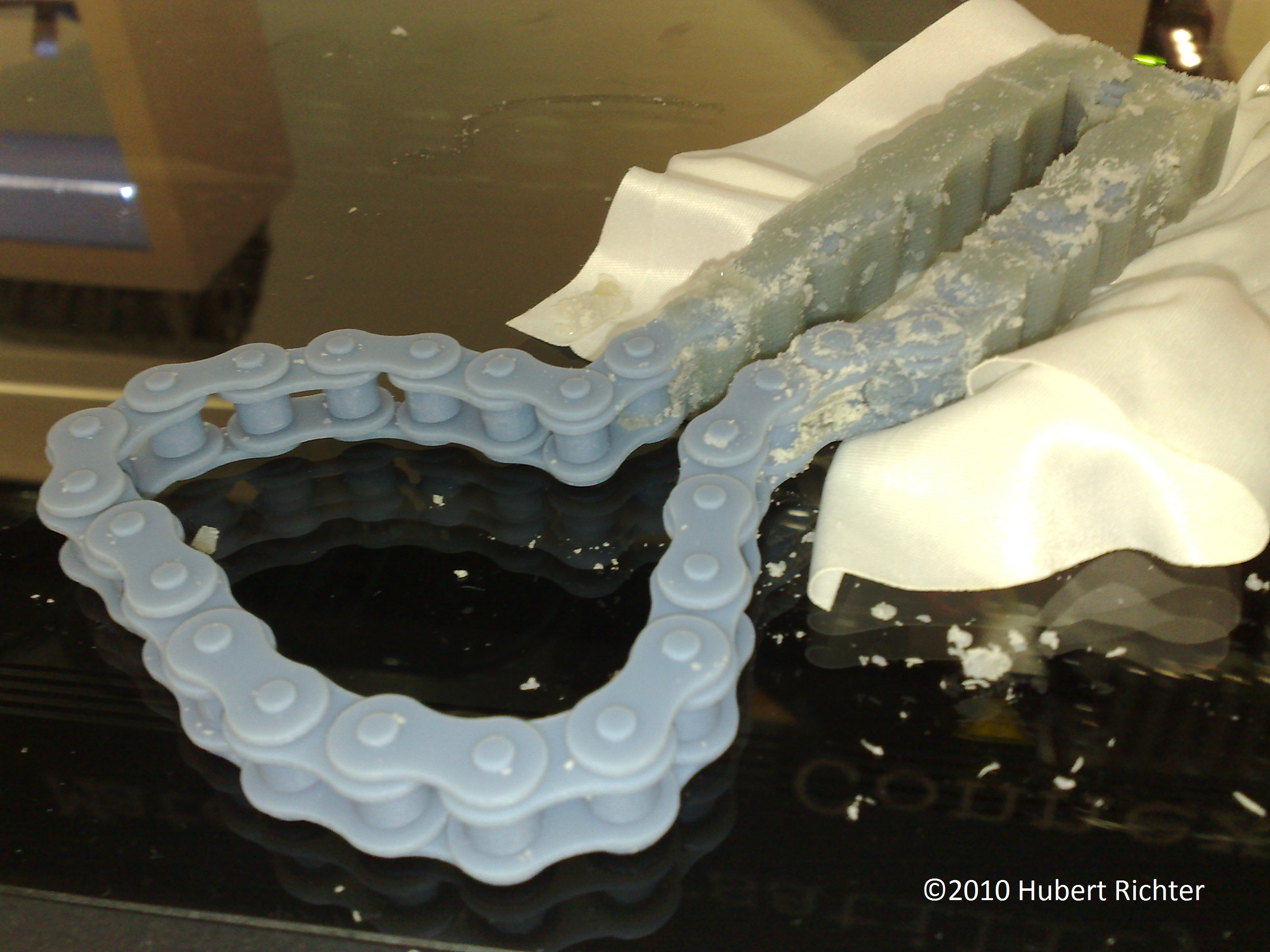Fused Deposition Modelling (FDM)
Fused deposition modelling is the best known and most common additive manufacturing process. FDM can be used to process easily fusible materials such as thermoplastics or even chocolate.
Imagine a computer-controlled hot glue gun. Layer by layer, small lines of molten plastic are deposited on a surface. The workpiece builds up gradually.

upper picture: Extrusion deposition (linked from www.additive3d.com)
The raw material is heated as in the hot glue gun, and pressed through a nozzle. The raw material is coiled onto a roll in form of a wire. The printer automatically uncoils the so-called filament as needed.
Important technical data of an FDM printer are: maximum build size, layer thickness, resolution and printing speed.
FDM-printing.avi Video: FDM printing ©2010 Hubert Richter
In contrast to other 3D-printing methods, support material must be considered in the FDM process. Gravity would otherwise make printing of support structures and cavities impossible. The support material is dissolved after printing by a chemical bath. The printing of working assemblies such as chains or roller bearings is thus possible.
